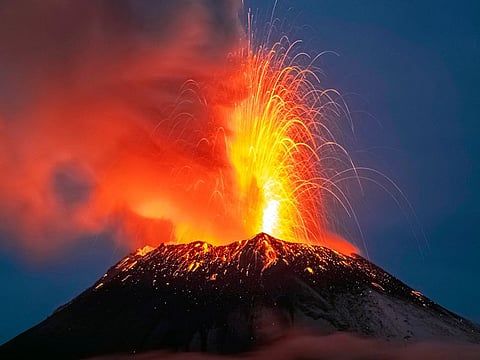Mexico: Flights suspended, schools closed as Popocatepetl volcano spewing ash and gas
Evacuations have not been ordered, but authorities were preparing for that scenario

Mexico City: Mexico’s Popocatepetl volcano spewed gas, smoke and ash Monday, leading education authorities to suspend in-person classes in parts of three states, a day after the government raised the warning level on the volcano’s activity.
Activity at the 5,425-meter mountain just 70 kilometers southeast of Mexico City and known affectionately as “El Popo” has increased over the past week. Evacuations have not been ordered, but authorities were preparing for that scenario and telling people to stay out of 12-kilometer radius around the peak.
The volcano’s activity temporary halted flights at the capital’s two airports over the weekend.
On Monday, an ash plume extended hundreds of kilometers to the east, stretching out over the Bay of Campeche, according to a US National Oceanic and Atmospheric Administration report.
On Sunday, national Civil Defense Coordinator Laura Velázquez said in a news conference that the stoplight-style warning system for the volcano remained on yellow, but had risen to phase 3. Still, she said, “there is no risk to the population at this time.”
In this phase, large domes develop and explode in increasing intensity, launching incandescent rock into the air and pyroclastic flows down its flanks.
Velázquez said only three of the volcano’s 565 explosions since September had been big, and the current activity was not the greatest of this century.
The Defense Department said it was prepared to activate 6,500 troops if necessary. Shelters were being prepared.
Some 25 million people live within a 100-kilometer radius, most of those in Mexico City’s metropolitan area.
Popocatepetl came to life in 1994 after a decades-long dormancy and experienced periods of greater activity from 2000 to 2003 and 2012 to 2016.
Sign up for the Daily Briefing
Get the latest news and updates straight to your inbox



